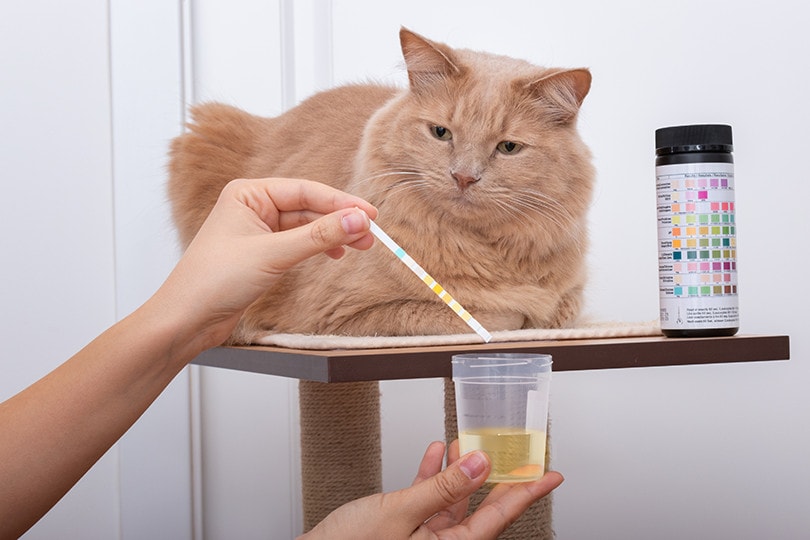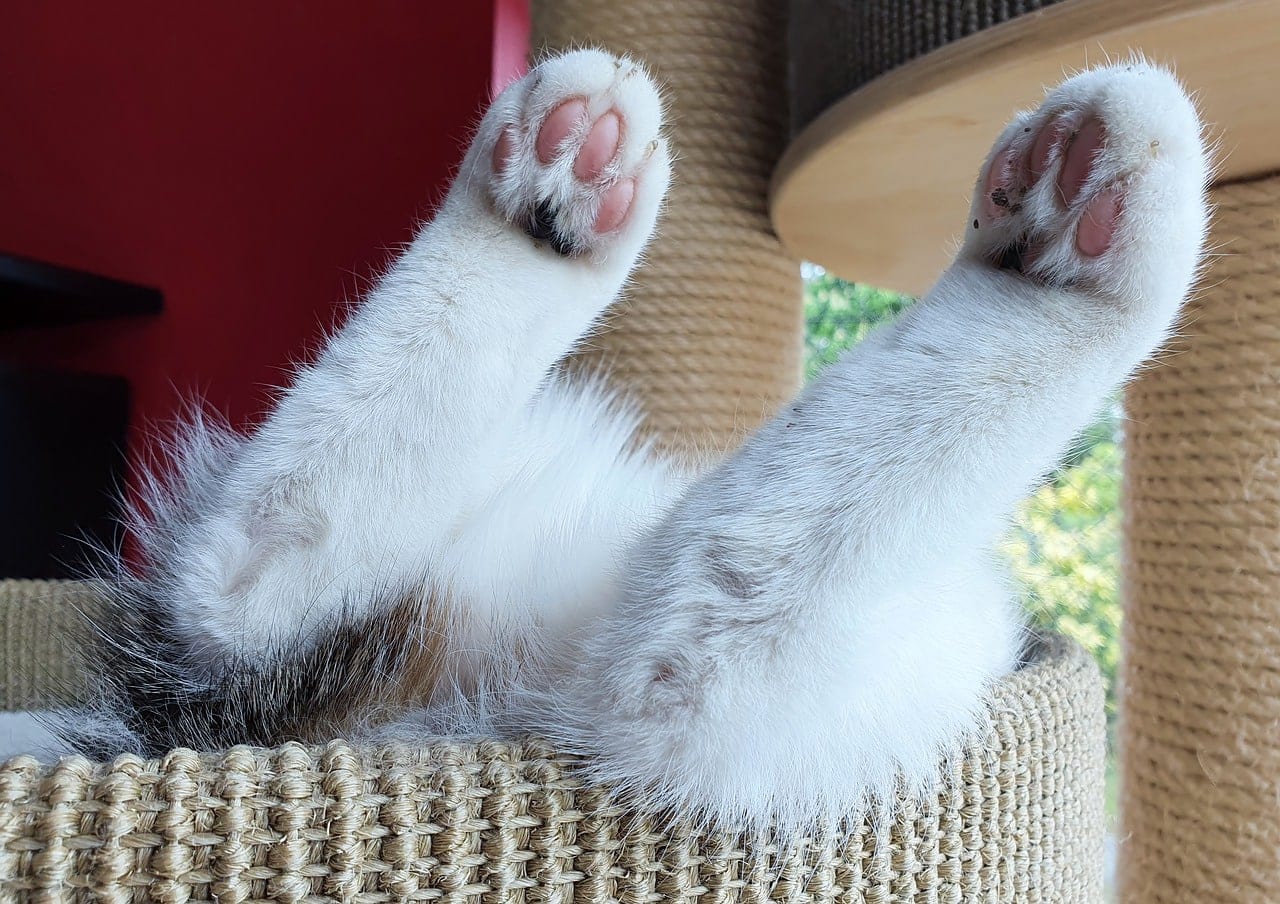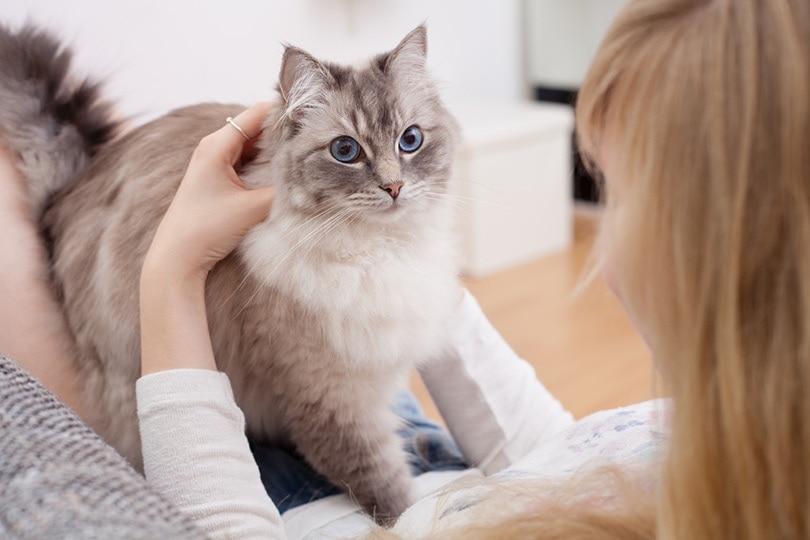How to Get Cat Urine Smell & Stains Out of Furniture: 3 Simple Steps

Updated on
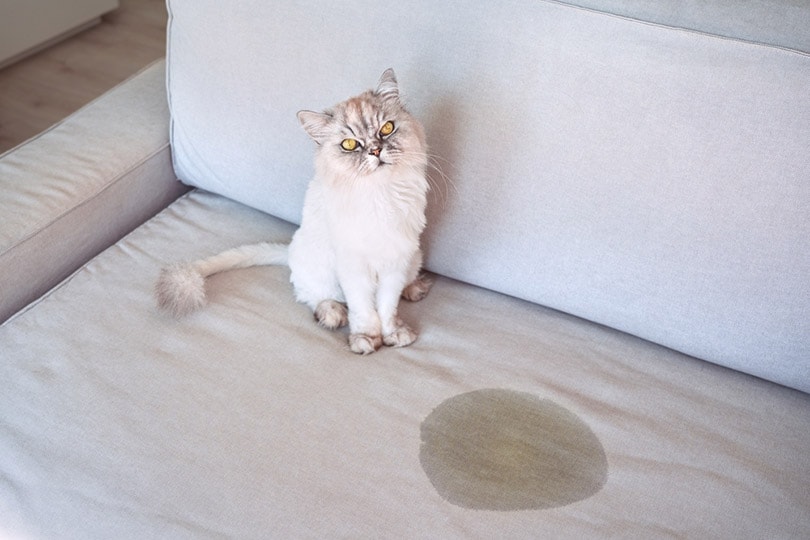
Cat owners know that one of the main benefits of having a cat is that they use litter boxes inside the house. There’s no crawling out of bed on cold mornings to leash up your pet and take them for a walk. Instead, cats handle their potty needs pretty much on their own. All they need from you is a daily scooping and maybe a weekly refresh of their litter box, and they’re all set.
Litter is designed to absorb cat pee, but there is no mistaking the smell of it. This is even more noticeable if the pee is outside the box. When cats start having accidents or worse, purposely peeing on your furniture, this can quickly turn into a nightmare.
No matter the reason that your cat did this, the fact remains that now, somehow, this pee must be cleaned up. Not only will it continue to smell if it isn’t, but your cat may also continue to pee in the same spot. This will create an endless cycle that will guarantee that your houseguests will not stay long in your home.
We gathered a few methods to help you combat this problem. Learn the proper techniques here to remove cat urine and its odor from your furniture for good.
 Types of Furniture
Types of Furniture
The methods of cleaning cat urine will vary depending on the type of furniture that needs attention. Whether your cat is peeing on wood, couches, or any other upholstered furniture, here are a few ways to remove urine stains and smells.
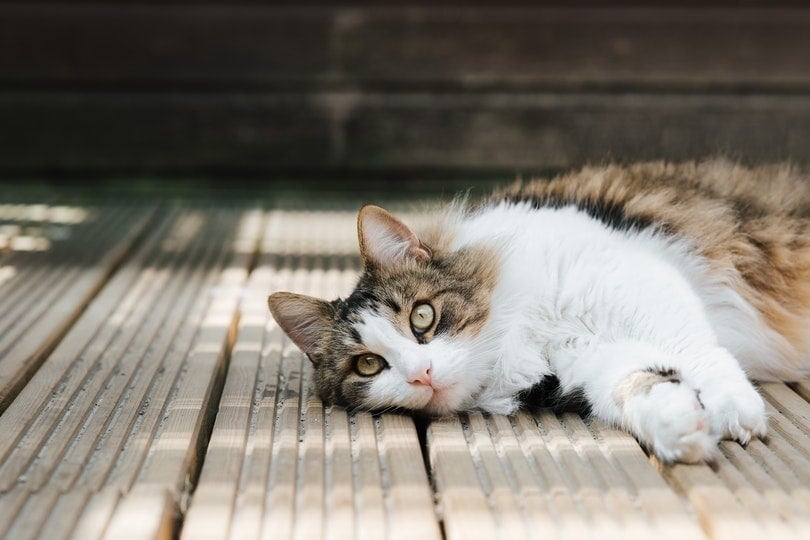
 The 3 Steps to Getting Cat Urine Out of Wood Furniture
The 3 Steps to Getting Cat Urine Out of Wood Furniture
It might seem easy to remove cat urine from wood: Just wipe it up! Unfortunately, it’s not that simple. The odor can remain, especially if the wood is permeable.
Before you begin, know that the treatment may result in wood discoloration and the need to sand and refinish the furniture once the urine is removed.
1. Absorb the urine.
Without rubbing, simply place a paper towel or cloth towel over the area to soak up as much of the pee as you can. If it’s already soaked in, try to remove any that remains.
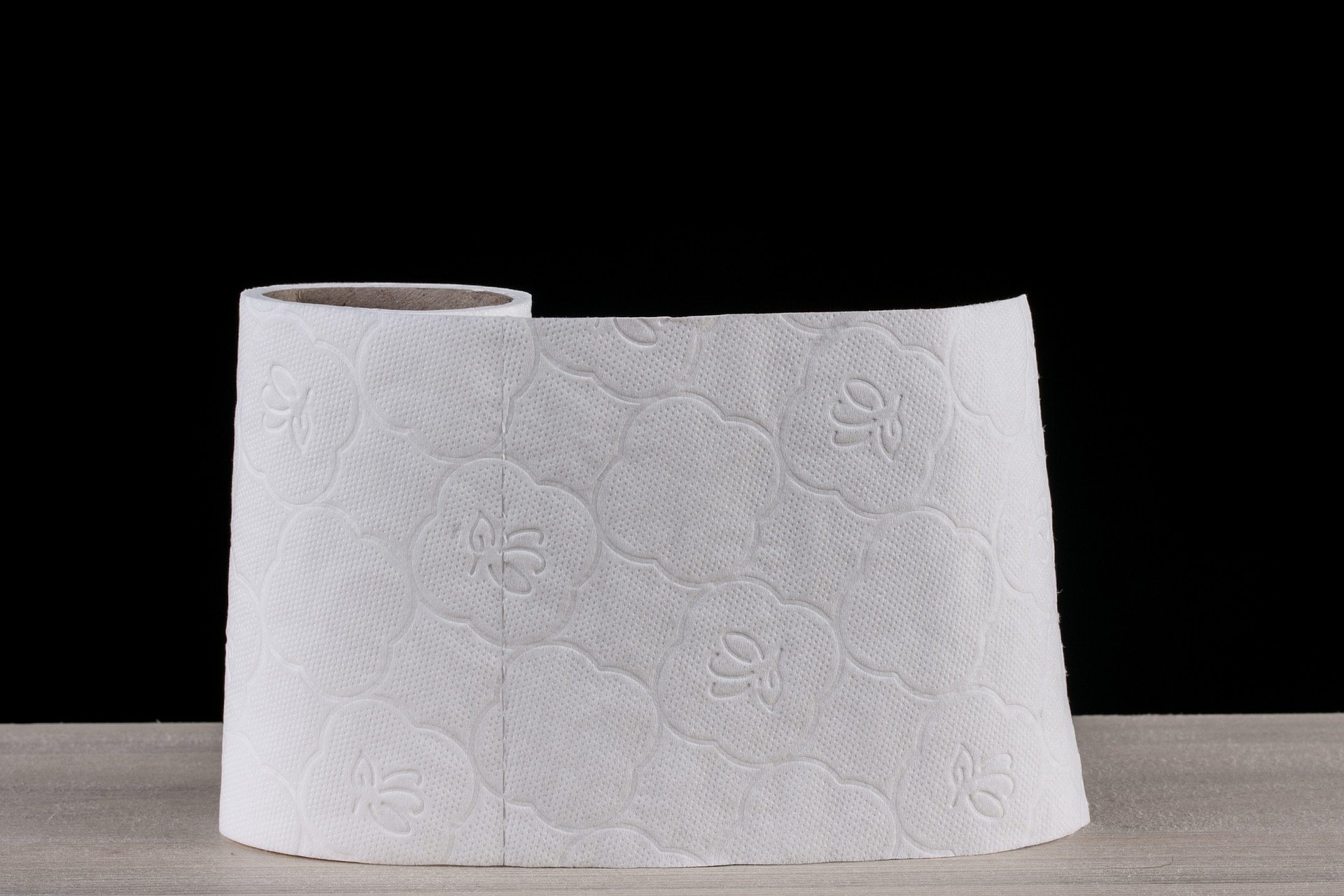
2. Use soap and water for impermeable surfaces.
Mix a solution of dish soap and warm water. Then, using a soft sponge, gently wipe the affected area until the urine smell is gone. This works best on impermeable surfaces because the urine can’t penetrate the topcoat of the wood.
3. Use baking soda and vinegar for fresh stains.
Mix a paste of equal parts baking soda and vinegar. Gently rub it over the stain, covering it completely. If the urine is still fresh, this will neutralize the odors before they have a chance to set in.
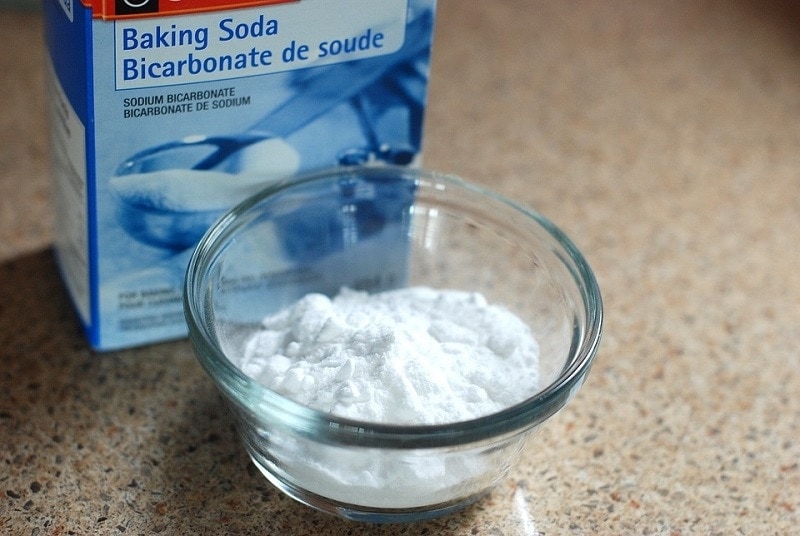
4. Use hydrogen peroxide for severe cases.
Soak a washcloth in 3% hydrogen peroxide, and place it over the stain for 24 hours. This can discolor and bleach your wood, so check the area periodically. If discoloration does occur, your wood will need to be refinished once the urine is gone.
It’s important to remove the urine from wood furniture as soon as you can. If your cat continues to pee in the same area over time, it can ruin the wood beyond repair.
The 3 Steps to Getting Cat Urine Out of Upholstered Furniture
If your cat has peed on your couch, armchair, ottoman, fabric-covered dining chairs, or anything similar, here are effective ways to remove the stains and odor.
If you have a steam cleaner for carpets and upholstery, you may find yourself running for it, thinking that it’s the perfect solution. But with cat pee, this works against the desired outcome. The heat from the steam cleaner will set the stain and odor into the fibers of the furniture covering. Avoid using steam cleaners and try these methods instead.
1. Blot but don’t rub.
Blot up as much of the urine as you can with paper or cloth towels. Press as hard as you can but don’t rub. If possible, stand on the paper towels and replace them as they get soaked, repeating the process until no more liquid is absorbed.
Rubbing can push the odor down into the fabric and cause the stain to spread. Be sure to blot only.
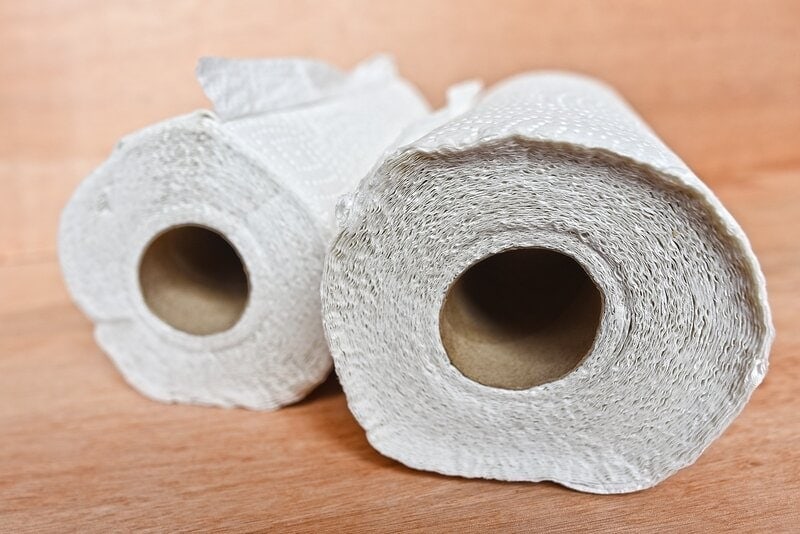
2. Use vinegar, water, and baking soda.
Mix equal parts white vinegar and water. Cover the stain with this mixture. Allow it to sit for 10 minutes, and then add a liberal amount of baking soda to the top of the stain. The baking soda should sit for 4–6 hours. This will break down the urine odor and the scent of vinegar.
Vacuum or wipe off the excess baking soda, and allow the area to dry. If the stain or odor remains, repeat the process.
3. Use baking soda, dish soap, and peroxide.
If the previous method didn’t work, you can try this next. Hydrogen peroxide may work better than vinegar in some cases, but it can also discolor the material of your furniture. Test a small area first to see if the peroxide damages the fabric.
After blotting up as much of the urine as possible, cover the area in baking soda. Mix 4 ounces of hydrogen peroxide with 1 teaspoon of dish soap.
Pour this mixture onto the area and begin dabbing and blotting with a clean, dry towel. It should neutralize the odors and remove the stain.

 If These Methods Fail
If These Methods Fail
Sometimes cat pee needs something stronger to remove it completely, and at-home remedies aren’t going to cut it. If you’ve tried these methods and they haven’t worked, consider an enzymatic cleaner. These work by breaking down cat pee stains and smells when nothing else will do the trick.
Enzymatic cleaners break down uric acid, getting rid of the smell so your cat won’t think that this is their new spot to pee.
Spray or pour the solution onto the stain, let it sit for the recommended time (usually about 10 minutes), and then blot it up. Not all materials are suitable for this type of cleaner, so be sure to test a small, unnoticeable area first to see the effects.
Carpet Shampooer vs. Steam Cleaner
Shampooers apply shampoo and water to the carpet. Then brushes work to loosen the dirt before the machine pulls the dirty solution out of the fibers.
Steam cleaners use hot water to loosen the dirt in the carpet and use a powerful vacuum to draw it out. The design is similar to a shampooer. Steam cleaners can provide a deeper clean by reaching further down into the fibers. Shampooers mostly clean the carpet surface.
Since steam cleaners force water deep into the fibers, this action plus the accompanying heat can cause urine smells to lock in more instead of being removed.
Shampooers may work to remove the stains and odors, but one of the aforementioned methods should be used first to neutralize as much of the smell as you can.
Final Thoughts
Cats may have accidents occasionally, but if you notice that your cat is continuing to pee outside of the litter box, they may be trying to alert you to a problem. Have your cat checked by a veterinarian if the peeing continues.
Once the stain and odor are removed, this should be enough to keep your cat from continuing to pee in that spot. Using these methods, you can neutralize odors and eliminate them completely instead of only covering them up.
Featured Image Credit: Creative Cat Studio, Shutterstock
 Types of Furniture
Types of Furniture The 3 Steps to Getting Cat Urine Out of Wood Furniture
The 3 Steps to Getting Cat Urine Out of Wood Furniture If These Methods Fail
If These Methods Fail